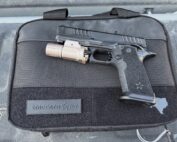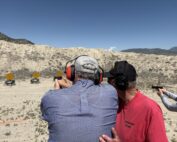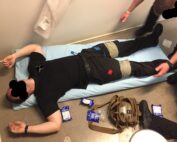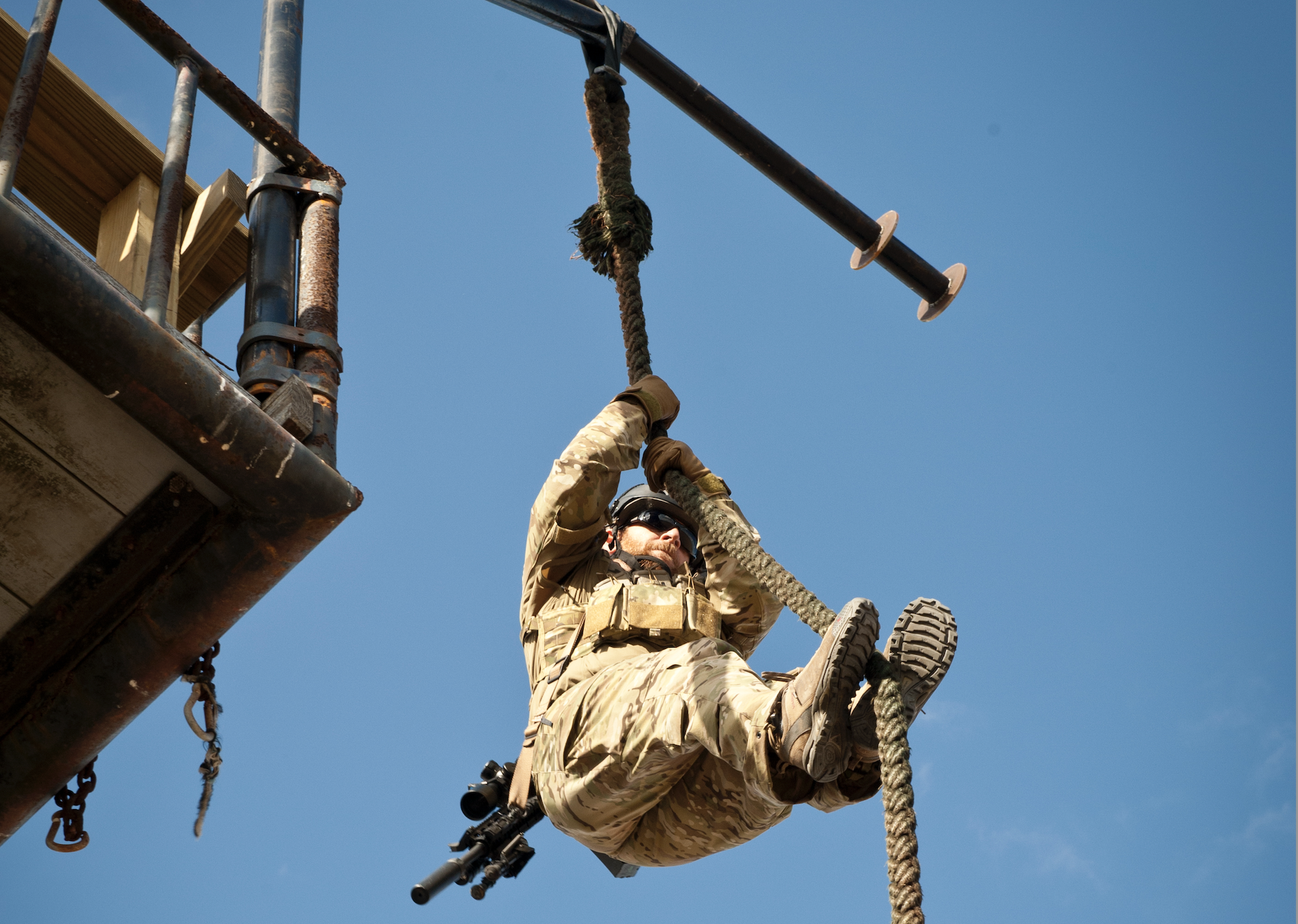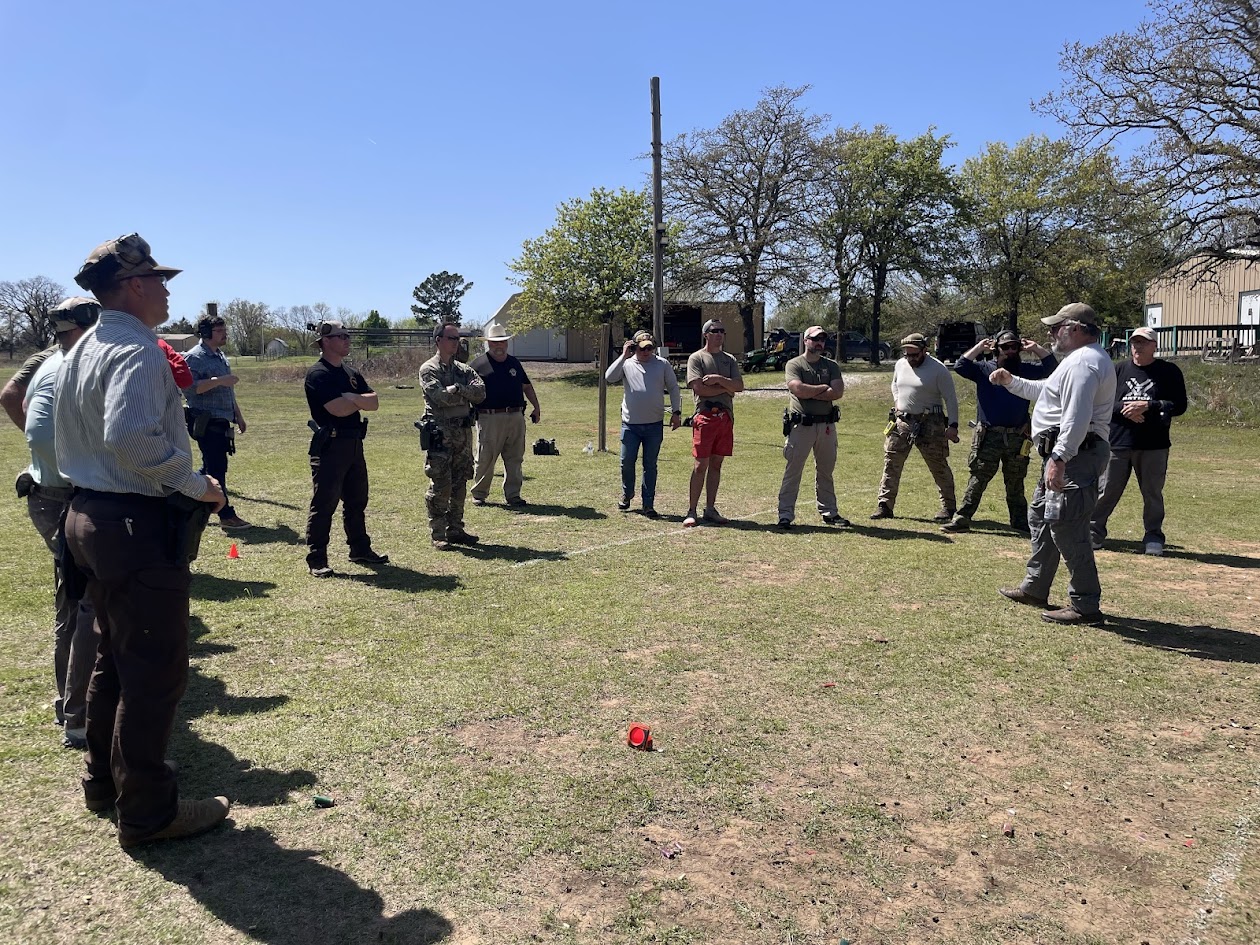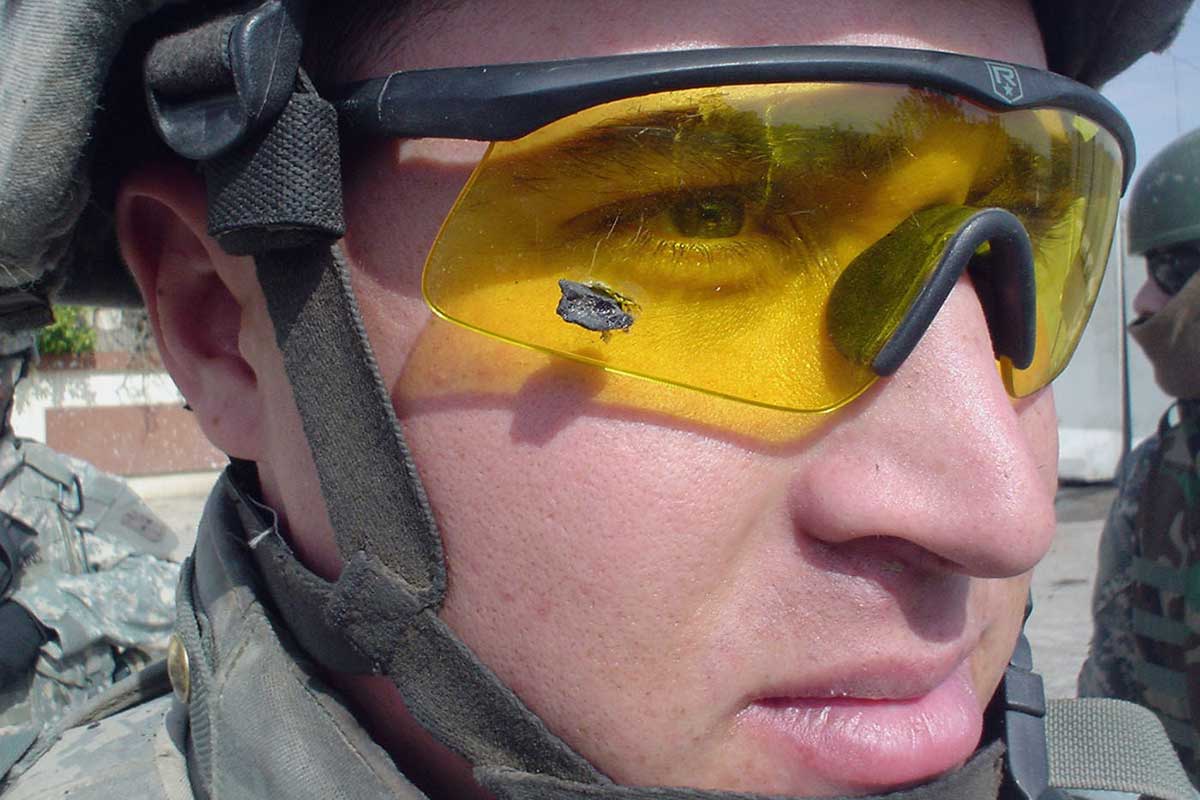
AC-030922-EP-Bomb-Fragment-800
Quality eye protection is essential for every shooter. It’s imperative for your safety. Debris and shrapnel that may result from the discharge of a firearm can cause severe and permanent eye damage. Eye injuries are avoidable. Standard glasses don’t cut it.
The need for eye protection isn’t limited to the range. Eye injuries can happen virtually anytime and anyplace. Protective eyewear could prevent most of these injuries. And the glasses that you may be wearing may not provide the level of protection you need.

In this Feb. 6, 2006 photo, 1LT Anthony Aguilar wears the ballistic protective eyewear that prevented a bomb fragment from possibly damaging his eyes when an improvised explosive device detonated near his Stryker vehicle while on patrol. Photo: US Army / Released.
FDA SAFETY STANDARDS
The Food and Drug Administration (FDA) regulates non-prescription sunglasses sold, in the US, as Class 1 medical devices. They’re required to conform to basic safety standards. Compliance with the voluntary American National Standards Institute (ANSI) Z80.3 standard is considered acceptable.
ANSI Z80.3 establishes standard guidelines for “noncorrective (essentially Plano power) lenses that are intended for attenuation of light and for fashion eyewear,” commonly known as sunglasses. ANSI Z80.3 includes standards for impact resistance, flammability, bio-compatibility, and optical properties. The current ANSI Z80.3 Standard is ANSI Z80.3-2018.
ANSI Z80.3 standard addresses ultraviolet (UV) protection, including elements such as light transmittance, including the wearer distinguishing between green and yellow light in average daylight.
SHATTERING COMMON MYTHS
FDA safety standards for sunglasses don’t provide the level of impact protection that’s essential for shooting or law enforcement, or even active sports. According to ophthalmologist Dr. Paul F. Vinger, an Associate Clinical Professor at Tufts Medical School in Medford, Massachusetts, most lenses shatter into fragments when hit by objects moving at easily reached speeds.
Dr. Vinger conducted a study involving 350 impact tests on various types of glasses published in the July 8, 1997 issue of JAMA: The Journal of the American Medical Association1. In the study, tennis balls propelled at 40 mph shattered high-index plastic lenses, while balls at 55 mph broke allyl resin (also known as hard resin or CR-39) plastic lenses, and those at 89 mph shattered glass lenses.

In a study conducted by ophthalmologist Paul F. Vinger, tennis balls propelled at 40 mph shattered high-index plastic lenses, while balls at 55 mph shatter allyl resin and those at 89 mph shattered glass lenses. Polycarbonate lenses didn’t shatter. Photo: Christian “VisualBeo” Horvat at English Wikipedia. Licensed under the CC BY-AS 3.0 License.
According to the study, polycarbonate lenses didn’t shatter at 89 mph. The lenses with a center thick-ness of 1 millimeter withstood the impact of a baseball fired at 94 mph. Lenses made from glass, allyl resin plastic, and high-index plastic shattered at that speed.
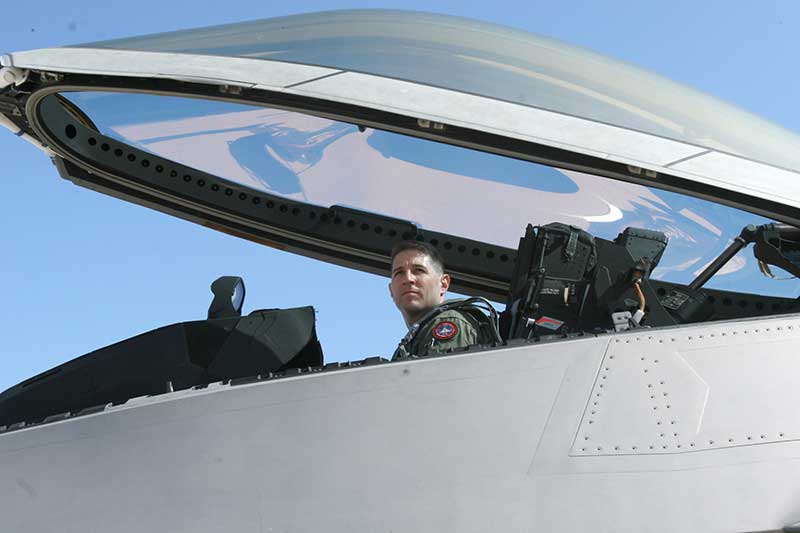
The cockpit canopy of the Lockhead Marin F22 jet fighter is made from a piece of high optical quality polycarbonate. Polycarbonate is 300-times stronger than single-strength glass and significantly tougher than other transparent sheet materials of equal thickness Photo: US Marine Corps photo by Staff Sgt. Christine E. Polvorosa / Released.
Polycarbonate lenses are the most impact-resistant lenses available. They’re lighter and thinner than glass or plastic lenses and have from 10 to 20 times more impact resistance. Polycarbonate lenses have excellent optical clarity, although they can’t match glass lenses in this regard. Polycarbonate inherently blocks nearly 100% of UV, blocking wavelengths up to 400nm (UV400 protection). It does scratch fairly easily and requires a scratch-resistant coating for durability.
ANSI/ISEA Z87.1 STANDARD
The ANSI Z87.1 Standard is designed to help eliminate eye and face hazards in occupational and educational settings. The standard provides criteria and requirements for selection, use, and maintenance of the different face and eye protectors to promote the most effective materials and methods of use. Compliance with this standard is also voluntary.
The current ANSI Z87.1 Standard is ANSI/ISEA Z87.1-2020. ISEA (International Safety Equipment Association) is an ANSI accredited standards developing organization for personal protective equipment (PPE) and technologies.
The 2020 edition of ANSI/ISEA Z87.1 is the second revision since 2010. The 2010 revision began a shift towards being more hazards based. Previously, protective eyewear was classified as either basic or high impact. Starting with ANSI Z87.1-2010, the distinction now is either non-impact or impact rated.
ANSI/ISEA impact-rated eyewear carries the Z87+ mark on the lens and the frame or housing. Z87+ means that the eyewear meets a higher impact standard and goes through a stricter set of tests than the basic Z87 standard.
There are two main tests for Z87+: high mass and high velocity. In the high mass test, a 500-gram (17.6 oz) pointed weight is dropped from a height of 50 inches (127 cm) onto the lenses mounted on a head form. No pieces from the frames or lenses may break free or fracture. In the high-velocity test, a 0.25-inch (0.635 cm) steel ball is shot at the lens on the head form at 150 fps (45.72 m/s). The pass/fail for the high-velocity test is the same as for the high mass test, with the added requirement that no part of the lens may touch the “eye” on the head form.
Prescription eyewear meeting the above standard is marked with Z87-2+. Even if marked ANSI/ISEA Z87.1 compliant, commercial eyewear products don’t necessarily meet military impact requirements.
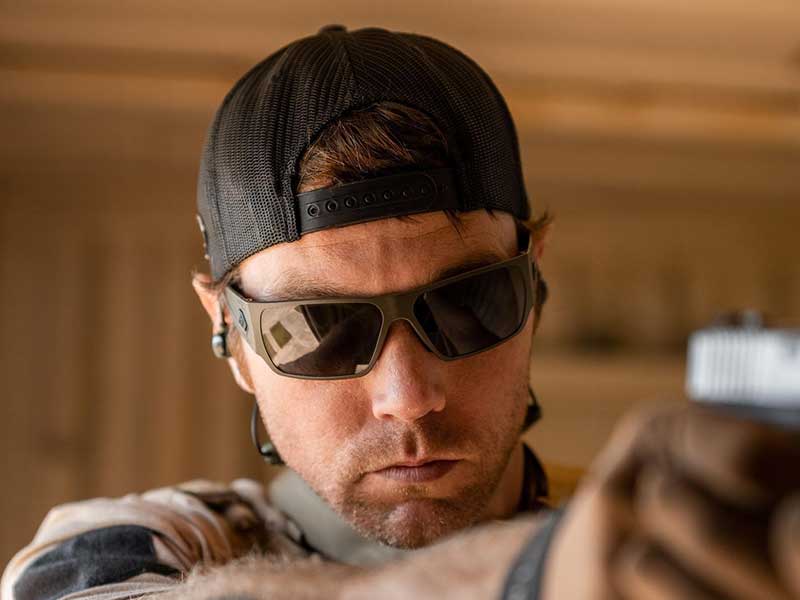
Ballistic eye protection is essential for anyone who may go into harm’s way. Gartorz® Z87+ MILSPEC Ballistic Specter was designed with shooters and tactical professionals in mind. It’s ballistic rated to Z87+ and MIL-PRF 32432 standards. Photo courtesy Gatorz.
MILITARY STANDARDS
The US Military Combat Eye Protection (MCEP) System specifications for combat eye protection (MIL-PRF-32432A) are even more stringent. MIL-PRF-32432A is a revision (dated September 11, 2018) of MIL-PRF-32432 (dated January 9, 2013) and supersedes it.
MCEP protects from dust, flying Debris, and ballistic hazards both in training and on the battlefield while maintaining compatibility with existing Soldier equipment. This specification is approved for use by all Departments and Agencies of the Department of Defense.
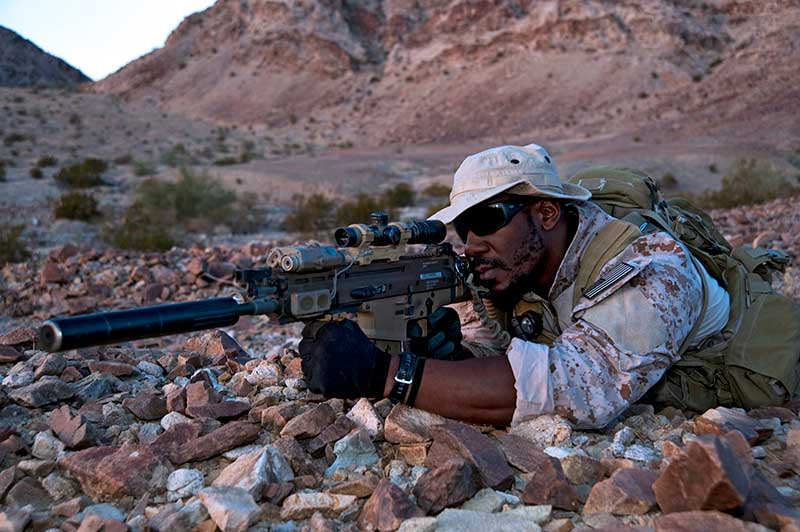
US Navy SEAL firing FN SCAR 17 during training evolution. The need for ballistic eye protection isn’t limited to the military or on the range. Most eye injuries are preventable. Photo: US Navy / Released.
The US military MIL-PRF-32432A Clause 4.8.4 Ballistic Fragmentation Protection Standard impact testing is much more stringent than ANSI/ISEA Z87.1. The MIL-PRF-32432A ballistic fragmentation performance requirement requires Class 1 eyewear (spectacles) to withstand two hits with a 0.15-caliber (3.81 mm), 585 (± 0.15) grain, T37 shaped projectile at 700 to 725 fps (213.36 to 220.98 m/s) to the primary lens. This is approximately seven times the kinetic energy level of ANSI Z87.1 impact tests.
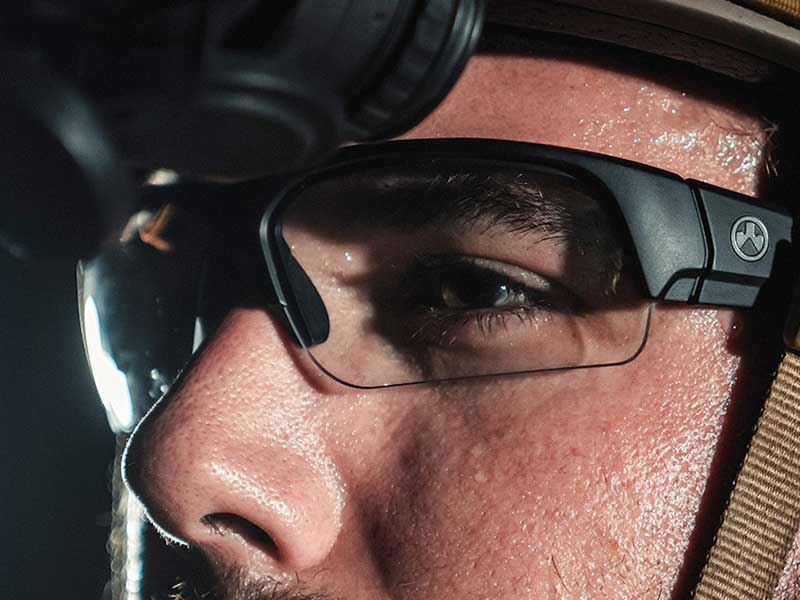
Ballistic eyewear with interchangeable lens system also allows the wearer to transition to lower-light operations with a clear lens or facilitates easy replacement of the lenses when needed. Magpu®l Helix is ballistic rated to Z87+ and MIL-PRF 32432 standards. Photo: Magpul Industries.
If you are looking for eyewear that meets the military’s ballistic standards, you can find it in one of two ways. First, manufacturers will include that certification in their product description, or second, you can purchase off of the US Army’s Authorized Protective Eyewear List (APEL®) Qualified Products List (QPL). APEL QPL eyewear will be labeled on the packaging and frame with “APEL.”
SUMMING UP
It’s critical to select the right eye pro for your applications. You have only one set of eyes, and you cannot replace them. When it comes to ballistic impact protection for shooting and law enforcement, Z87+ compliant eyewear that also meets the more stringent military ballistic standards will provide you with optimal impact protection.
ENDNOTES
(1) P F Vinger, L Parver, D V Alfaro 3rd, T Woods, and B S Abrams, “Shatter Resistance of Spectacle Lenses,” JAMA 1997 Jan 8;277(2):142-4. https://jamanetwork.com/journals/jama/article-abstract/412933


 (No Ratings Yet)
(No Ratings Yet)